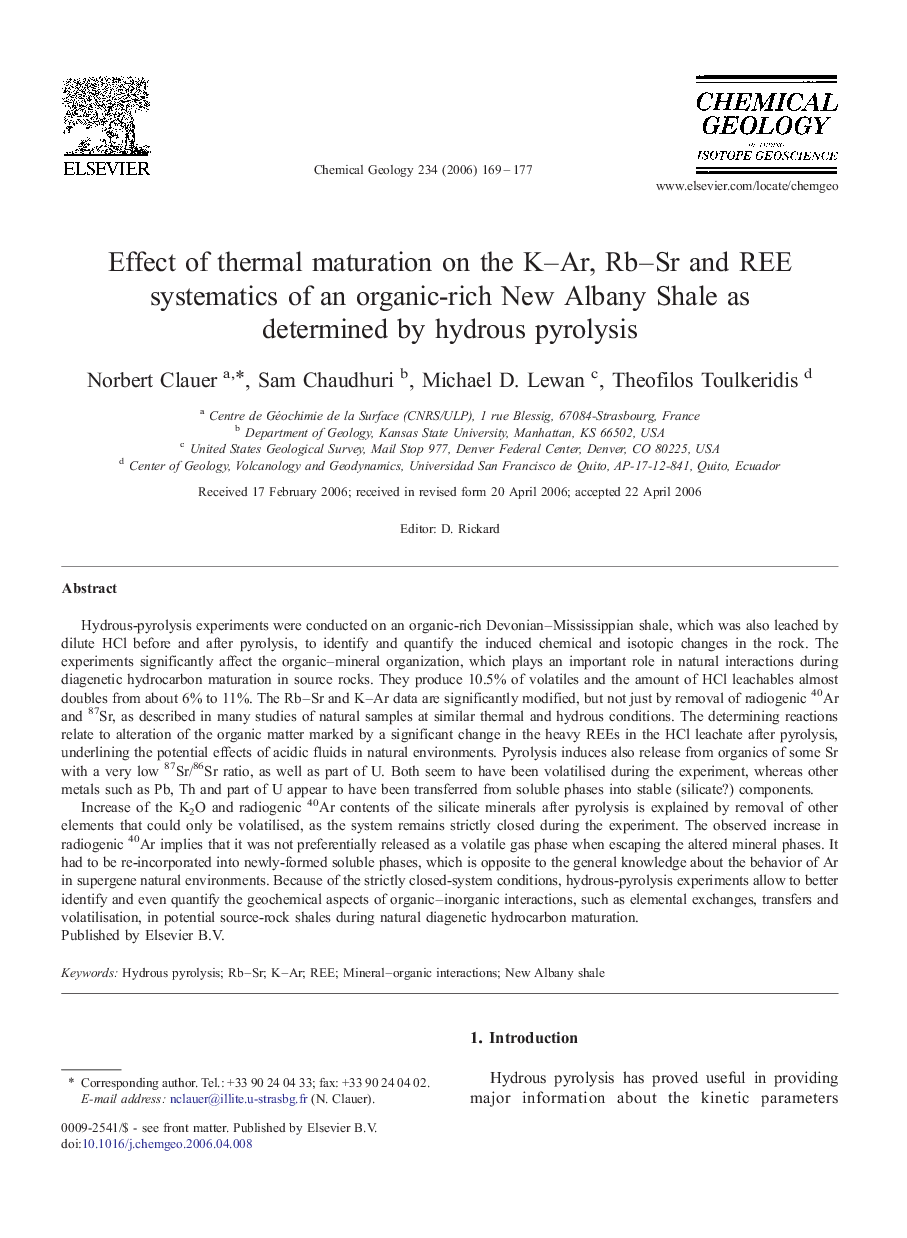| Article ID | Journal | Published Year | Pages | File Type |
|---|---|---|---|---|
| 4701019 | Chemical Geology | 2006 | 9 Pages |
Abstract
Increase of the K2O and radiogenic 40Ar contents of the silicate minerals after pyrolysis is explained by removal of other elements that could only be volatilised, as the system remains strictly closed during the experiment. The observed increase in radiogenic 40Ar implies that it was not preferentially released as a volatile gas phase when escaping the altered mineral phases. It had to be re-incorporated into newly-formed soluble phases, which is opposite to the general knowledge about the behavior of Ar in supergene natural environments. Because of the strictly closed-system conditions, hydrous-pyrolysis experiments allow to better identify and even quantify the geochemical aspects of organic-inorganic interactions, such as elemental exchanges, transfers and volatilisation, in potential source-rock shales during natural diagenetic hydrocarbon maturation.
Related Topics
Physical Sciences and Engineering
Earth and Planetary Sciences
Geochemistry and Petrology
Authors
Norbert Clauer, Sam Chaudhuri, Michael D. Lewan, Theofilos Toulkeridis,
